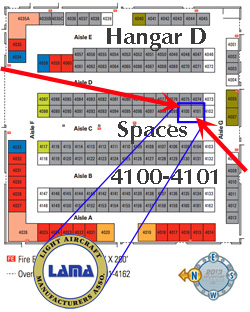 Aviation bargain hunters … mark your calendar for Saturday, October 5th. Aircraft Spruce is holding their Customer Appreciation Day at all three of their locations: in Corona, California at their headquarters; in their southeastern U.S. location in Peachtree City, Georgia; and for Canadian enthusiasts at Brantford, Ontario. Aircraft Spruce offers reduced pricing plus they’ll have reps from a number of their top suppliers. The big mail order house said they will feature product demonstrations from Garmin, Lightspeed, J.P. Instruments, Hartzell, Scheyden, PTI, Icom, and Dynon plus others. To see which vendors are attending each location, click this link. Pilots that attend qualify for what Aircraft Spruce calls “spectacular discounts” and might also win a raffle. All proceeds from raffle tickets will go to EAA Chapter 1 and EAA Chapter 468 for Young Eagles.
One of their nifty new products for anyone who uses a smartphone, iPod, tablet, GPS device, eReader, camera, or flashlight (doesn’t that include just about everyone?) is a new product called PowerSwatch.
Aviation bargain hunters … mark your calendar for Saturday, October 5th. Aircraft Spruce is holding their Customer Appreciation Day at all three of their locations: in Corona, California at their headquarters; in their southeastern U.S. location in Peachtree City, Georgia; and for Canadian enthusiasts at Brantford, Ontario. Aircraft Spruce offers reduced pricing plus they’ll have reps from a number of their top suppliers. The big mail order house said they will feature product demonstrations from Garmin, Lightspeed, J.P. Instruments, Hartzell, Scheyden, PTI, Icom, and Dynon plus others. To see which vendors are attending each location, click this link. Pilots that attend qualify for what Aircraft Spruce calls “spectacular discounts” and might also win a raffle. All proceeds from raffle tickets will go to EAA Chapter 1 and EAA Chapter 468 for Young Eagles.
One of their nifty new products for anyone who uses a smartphone, iPod, tablet, GPS device, eReader, camera, or flashlight (doesn’t that include just about everyone?) is a new product called PowerSwatch.Aircraft Spruce Appreciation Day Goodie


Charge your mobile devices while away from the grid.

Aviation bargain hunters … mark your calendar for Saturday, October 5th. Aircraft Spruce is holding their Customer Appreciation Day at all three of their locations: in Corona, California at their headquarters; in their southeastern U.S. location in Peachtree City, Georgia; and for Canadian enthusiasts at Brantford, Ontario. Aircraft Spruce offers reduced pricing plus they’ll have reps from a number of their top suppliers. The big mail order house said they will feature product demonstrations from Garmin, Lightspeed, J.P. Instruments, Hartzell, Scheyden, PTI, Icom, and Dynon plus others. To see which vendors are attending each location, click this link. Pilots that attend qualify for what Aircraft Spruce calls “spectacular discounts” and might also win a raffle. All proceeds from raffle tickets will go to EAA Chapter 1 and EAA Chapter 468 for Young Eagles.
One of their nifty new products for anyone who uses a smartphone, iPod, tablet, GPS device, eReader, camera, or flashlight (doesn’t that include just about everyone?) is a new product called PowerSwatch. Built into a rugged fabric for lightweight transport is what Aircraft Spruce calls a “portable energy source.” The company elaborated, “PowerSwatch is the only expandable solar charger on the market today.” The company says the solar charge can produce 3.5 to 35 watts. You can see this at their three locations or check it out on their website, where you can also request a free copy of the company’s 950-page catalog. Aircraft Spruce is a large and respected supplier of all kinds of goods for homebuilders and recreational pilots. Another division also offers Rotax parts and service.
 Aviation bargain hunters … mark your calendar for Saturday, October 5th. Aircraft Spruce is holding their Customer Appreciation Day at all three of their locations: in Corona, California at their headquarters; in their southeastern U.S. location in Peachtree City, Georgia; and for Canadian enthusiasts at Brantford, Ontario. Aircraft Spruce offers reduced pricing plus they’ll have reps from a number of their top suppliers. The big mail order house said they will feature product demonstrations from Garmin, Lightspeed, J.P. Instruments, Hartzell, Scheyden, PTI, Icom, and Dynon plus others. To see which vendors are attending each location, click this link. Pilots that attend qualify for what Aircraft Spruce calls “spectacular discounts” and might also win a raffle. All proceeds from raffle tickets will go to EAA Chapter 1 and EAA Chapter 468 for Young Eagles.
One of their nifty new products for anyone who uses a smartphone, iPod, tablet, GPS device, eReader, camera, or flashlight (doesn’t that include just about everyone?) is a new product called PowerSwatch.
Aviation bargain hunters … mark your calendar for Saturday, October 5th. Aircraft Spruce is holding their Customer Appreciation Day at all three of their locations: in Corona, California at their headquarters; in their southeastern U.S. location in Peachtree City, Georgia; and for Canadian enthusiasts at Brantford, Ontario. Aircraft Spruce offers reduced pricing plus they’ll have reps from a number of their top suppliers. The big mail order house said they will feature product demonstrations from Garmin, Lightspeed, J.P. Instruments, Hartzell, Scheyden, PTI, Icom, and Dynon plus others. To see which vendors are attending each location, click this link. Pilots that attend qualify for what Aircraft Spruce calls “spectacular discounts” and might also win a raffle. All proceeds from raffle tickets will go to EAA Chapter 1 and EAA Chapter 468 for Young Eagles.
One of their nifty new products for anyone who uses a smartphone, iPod, tablet, GPS device, eReader, camera, or flashlight (doesn’t that include just about everyone?) is a new product called PowerSwatch.








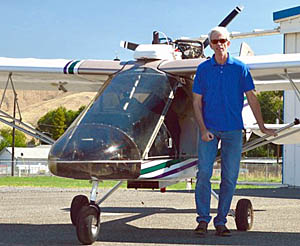








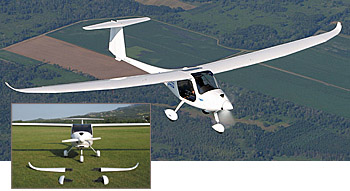







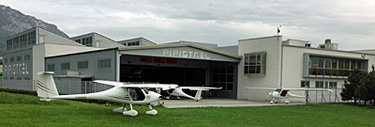


















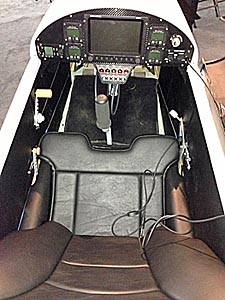






 Elements are basic components of nature. As in our first part, I see Oshkosh Elements as fascinating ideas other than airframes or engines. One such worthy idea is Beringer’s new anti-groundloop tailwheel. Before we talk about their innovation, though, let’s take a quick glance at tailwheel design popularity. Cub-like models and other taildraggers account for more than 20% of the LSA fleet today. Tricycle gear may dominate but lots of pilots believe a tailwheel aircraft is the “proper” gear for an airplane with more machismo, more bush-capability, more aerodynamic efficiency (less drag) … you name it, many pilots just love taildraggers. Tricycle gear pilots, however, not so much. The reason? Trigear landings tend to self correct regarding keeping the airplane straight on the runway. Tailwheel aircraft threaten the dreaded ground loop. Since this sounds — and can be — scary, lots of Cessna or Piper-trained pilots avoid flying taildraggers.
Elements are basic components of nature. As in our first part, I see Oshkosh Elements as fascinating ideas other than airframes or engines. One such worthy idea is Beringer’s new anti-groundloop tailwheel. Before we talk about their innovation, though, let’s take a quick glance at tailwheel design popularity. Cub-like models and other taildraggers account for more than 20% of the LSA fleet today. Tricycle gear may dominate but lots of pilots believe a tailwheel aircraft is the “proper” gear for an airplane with more machismo, more bush-capability, more aerodynamic efficiency (less drag) … you name it, many pilots just love taildraggers. Tricycle gear pilots, however, not so much. The reason? Trigear landings tend to self correct regarding keeping the airplane straight on the runway. Tailwheel aircraft threaten the dreaded ground loop. Since this sounds — and can be — scary, lots of Cessna or Piper-trained pilots avoid flying taildraggers. Several other reporters covered
Several other reporters covered  Another journalist, AIN’s Matt Thurber, wrote: “On normal tailwheel designs, the pivot axis of a steerable tailwheel is offset from the wheel axis, and the distance between the two is called the trail (illustrated photo), according to engineer Claire Beringer. “When you increase this [trail], maneuverability increases but stability decreases.” While pilots appreciate the trail feature that allows the tailwheel to pivot for improved ground handling, if there is a disturbance during landing, such as a crosswind gust, the force on the tailwheel tends to cause the wheel itself to [steer] just when it would be more helpful for the pilot if the wheel were to remain straight. “The [tailwheel] spring is not strong enough to retain the tailwheel in its axis,” she said. With the wheel in the locked position, the wheel can’t pivot but can still be used to steer a limited amount right or left. By pulling a cable in the cockpit (simulated by “A”), the pilot adds the trail to the tailwheel assembly, which can then pivot in any direction.”
Another journalist, AIN’s Matt Thurber, wrote: “On normal tailwheel designs, the pivot axis of a steerable tailwheel is offset from the wheel axis, and the distance between the two is called the trail (illustrated photo), according to engineer Claire Beringer. “When you increase this [trail], maneuverability increases but stability decreases.” While pilots appreciate the trail feature that allows the tailwheel to pivot for improved ground handling, if there is a disturbance during landing, such as a crosswind gust, the force on the tailwheel tends to cause the wheel itself to [steer] just when it would be more helpful for the pilot if the wheel were to remain straight. “The [tailwheel] spring is not strong enough to retain the tailwheel in its axis,” she said. With the wheel in the locked position, the wheel can’t pivot but can still be used to steer a limited amount right or left. By pulling a cable in the cockpit (simulated by “A”), the pilot adds the trail to the tailwheel assembly, which can then pivot in any direction.” Summarizing then, aviation has three possibilities for taildraggers since the old tail skid: a tailwheel in fixed or locked position; the classic trailing, steerable tailwheel; and the new best choice: Beringer’s no-trail innovation. With the latter, the pilot enjoys full movement while taxiing to the runway, sets the knob or lever (depending on how the kit builder or manufacturer implements this) to “lock” the tailwheel into limited steering for take off, and leaves it that way throughout landing. When ready to taxi back to parking, the pilot “unlocks” the tailwheel and again has broad steering control. Short of gross pilot error, Beringer’s creation virtually eliminates the chance of the dreaded ground loop. Now pilots who grew up flying trigear airplanes can lose their fears and perhaps try a fun tailwheel aircraft design. Well done, Beringer!
Summarizing then, aviation has three possibilities for taildraggers since the old tail skid: a tailwheel in fixed or locked position; the classic trailing, steerable tailwheel; and the new best choice: Beringer’s no-trail innovation. With the latter, the pilot enjoys full movement while taxiing to the runway, sets the knob or lever (depending on how the kit builder or manufacturer implements this) to “lock” the tailwheel into limited steering for take off, and leaves it that way throughout landing. When ready to taxi back to parking, the pilot “unlocks” the tailwheel and again has broad steering control. Short of gross pilot error, Beringer’s creation virtually eliminates the chance of the dreaded ground loop. Now pilots who grew up flying trigear airplanes can lose their fears and perhaps try a fun tailwheel aircraft design. Well done, Beringer!



















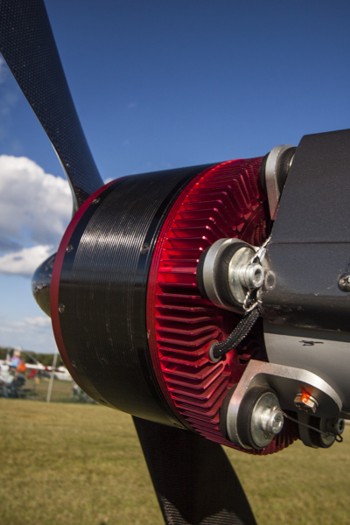









 Opening day at AirVenture Oshkosh 2013 and the very first announcement before exhibit spaces even opened was a press conference from Icon Aircraft. To a media-only group of perhaps 30 or 40 media personalities, CEO Kirk Hawkins began, “Is there anyone here who doesn’t know what this about?” No one responded; everyone knew what the rumor mill had begun spewing. Icon is in good company. Even premiere new product secret-keeper, Apple Inc., has trouble announcing something that no one expected. Yet a few comments from the top gun at Icon were of special interest. One other observation first: it was a media event, but if even a single FAA person was in attendance, they were under cover. No FAA shirts or badges could be spotted. Thus Icon made their announcement without any active FAA participation.
Opening day at AirVenture Oshkosh 2013 and the very first announcement before exhibit spaces even opened was a press conference from Icon Aircraft. To a media-only group of perhaps 30 or 40 media personalities, CEO Kirk Hawkins began, “Is there anyone here who doesn’t know what this about?” No one responded; everyone knew what the rumor mill had begun spewing. Icon is in good company. Even premiere new product secret-keeper, Apple Inc., has trouble announcing something that no one expected. Yet a few comments from the top gun at Icon were of special interest. One other observation first: it was a media event, but if even a single FAA person was in attendance, they were under cover. No FAA shirts or badges could be spotted. Thus Icon made their announcement without any active FAA participation.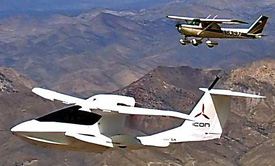 Icon received Grant of Exemption No. 10829 for a
Icon received Grant of Exemption No. 10829 for a  More structure on wings and tail was needed to achieve the SRA and that drove the request for weight exemption, Hawkins added. However, Icon said they do not plan to use all 1,680 pounds they could under the exemption. In their press conference, the company mentioned a target weight of 1,510 pounds, only 80 more than allowed for seaplanes without an exemption. These and other refinements mean that the price will rise from $139,000 (in 2009 dollars) to a starting price of $189,000 but you’ll get more airplane in the form of the costlier fuel injected
More structure on wings and tail was needed to achieve the SRA and that drove the request for weight exemption, Hawkins added. However, Icon said they do not plan to use all 1,680 pounds they could under the exemption. In their press conference, the company mentioned a target weight of 1,510 pounds, only 80 more than allowed for seaplanes without an exemption. These and other refinements mean that the price will rise from $139,000 (in 2009 dollars) to a starting price of $189,000 but you’ll get more airplane in the form of the costlier fuel injected  The results: Icon will immediately increase the current effort to prepare for production. On a large projection screen they showed a handsome computer-imagery video of a production facility full of A5s being built. It’s all animation but it was done with the style we’ve come to expect from the Southern California company. So, the exemption has been granted and at least three other companies told me within 15 minutes they will also prepare a request based on safety features (but see Update below). FAA may not grant them all — they may not be adequately prepared and documented — but the agency has to at least review them and in a period of budget constraint, these requests will surely take plenty of time and could consume time from FAA personnel. Despite such potential hiccups, Hawkins felt Icon’s grant of exemption was a positive for the whole LSA industry and many, though not all, are inclined to agree.
The results: Icon will immediately increase the current effort to prepare for production. On a large projection screen they showed a handsome computer-imagery video of a production facility full of A5s being built. It’s all animation but it was done with the style we’ve come to expect from the Southern California company. So, the exemption has been granted and at least three other companies told me within 15 minutes they will also prepare a request based on safety features (but see Update below). FAA may not grant them all — they may not be adequately prepared and documented — but the agency has to at least review them and in a period of budget constraint, these requests will surely take plenty of time and could consume time from FAA personnel. Despite such potential hiccups, Hawkins felt Icon’s grant of exemption was a positive for the whole LSA industry and many, though not all, are inclined to agree. “A weight increase was not a factor in granting Icon’s request for exemption,” a senior FAA executive told the board members. Instead, the agency “rewarded” Icon with a weight increase because they felt the company had achieved a highly stall resistant wing design to avoid the reason for 70% of fatalities, namely stall/spin.
“A weight increase was not a factor in granting Icon’s request for exemption,” a senior FAA executive told the board members. Instead, the agency “rewarded” Icon with a weight increase because they felt the company had achieved a highly stall resistant wing design to avoid the reason for 70% of fatalities, namely stall/spin. Beyond the weight increase, FAA allows 100 kilowatts (KW) of power or about 135 horsepower. However, this is a firm limit. Any LSA with more than 100 KW of power must remain a non-exempted LSA and cannot weigh more than the current 1,320 or 1,430 pound weights (600 and 650 kg).
Beyond the weight increase, FAA allows 100 kilowatts (KW) of power or about 135 horsepower. However, this is a firm limit. Any LSA with more than 100 KW of power must remain a non-exempted LSA and cannot weigh more than the current 1,320 or 1,430 pound weights (600 and 650 kg).





